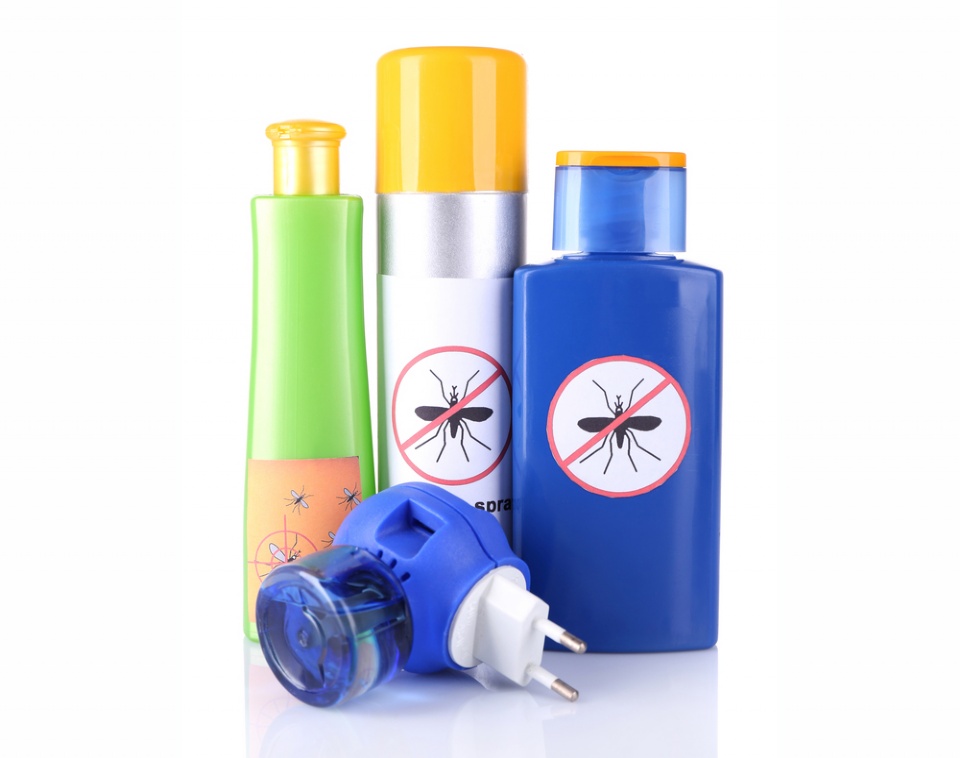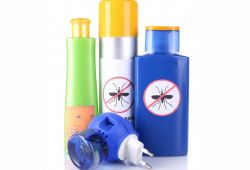When you go out for an evening stroll or hiking, you must endure some insect bites and put up with pesky insects. Imagine how your child must feel when he/she’s stung by bugs.
By a lake, in the forest, in a cabin or even in your backyard, you see some of those insects that bite and sting. Although it is almost impossible to develop any kind of disease after being bitten, the rash it causes is enough to drive adults and children crazy. To avoid becoming a snack, here is a little list of insects and a few tips to protect your babies.
Mosquitoes
Extremely unpleasant, mosquitoes inject an anticoagulant in our skin before drinking a few drops of our blood. It is that anticoagulant that forms the horrible itchy bump that we know.
If mosquitoes can transmit serious diseases such as malaria and filariasis in some Asian and African countries, they are virtually harmless to us. The most anxious mothers could say that, even here, mosquitoes can transmit the West Nile virus but you should know that the Public Health Agency of Canada says that "Most people infected with the virus have no symptoms or in mild cases, symptoms may resemble the flu."
It is still best to protect your children when the presence of the virus has been reported in your area. If cases are reported, take all necessary precautions to ensure that persons with a weakened immune system are never in contact with these infamous mosquitoes.
Also, even if they are benign, having several bites can highly irritate a baby or a young child. That is another good reason to protect your children.
Covering
Mosquito nets are the most effective measure against mosquitoes and other biting insects. At home, make sure your window screens are in good condition and teach children to shut the door behind them, even during the summer. You can also buy a net to place over your child’s bed to protect him from insects that would have made it in your house. Other nets are designed to protect your child when he is in a stroller.
Another good way to protect your child is to dress him appropriately. Dress him with loose-fitting clothes with long sleeves, long pants and a hat. Prefer pale colours that won’t attract mosquitoes. Also avoid going out with your baby at dawn because that’s when mosquitoes are most active.
Creams
You should know that all products containing DEET shouldn’t be used in babies under six months old. Also, products containing 10<>percentage<> DEET should only be applied once a day for children between 6 months and 2 years old and three times per day for children aged 2 to 12 years.
Similarly, it is preferable not to use large amounts of essential oils on children under seven years old and you must remember that pure essential oils are too strong for the skin of a baby. However, a drop of citronella oil in a bit of almond oil is very effective in repelling mosquitoes for children over two years old.
For younger children, there are citronella and lavender stickers that can be used at a very early age because they don’t touch the skin. Just place them on hats, vests, tops or pants and voila.
Other insects that bite or sting
Mosquitoes are not the only biting insects. Black flies and biting midges also attack us and although the injury they cause does not last as long as mosquitos bite, it is no less painful. It is difficult to keep these two species away without using an insect repellent because they are small enough to pass through the tiny holes of nets.
For their part, and despite their loud sound, bumblebees are harmless. Only females have darts and they use it so little that it is possible to take one gently in your hands, according to the Office for Insects and Their Environment. Wasps and bees sting too, but only when they feel threatened. Due to the intense pain they cause and the risk of allergy, it is best to keep them away from small children (and adults, too!).
Horseflies, also called deer flies, feed on our blood to lay their eggs. Their bite is painful and these flies often carry diseases. Like mosquitoes, deer flies avoid light coloured clothing where they would be easily seen. If you don’t own a screen, don’t dress your kids in dark clothing. It is also said that pure vinegar sprayed on our clothes keeps them away.
Blacklegged ticks and Lyme disease
The blacklegged ticks are currently observed by the Public Health Agency of Canada because of the risk of transmission of Lyme disease as the number of cases has increased in recent years. Lyme disease can cause severe symptoms in humans, but fortunately, it can be effectively treated.
To reduce the risk, it is necessary to mow the lawn regularly, remove dead leaves and prevent pets from wandering in the forest.
To read more articles from Motherforlife website, please visit Motherforlife.com.

 In The Latest Issue:Latest Issue:
In The Latest Issue:Latest Issue:
- A Bittersweet Farewell
- The new Laval Aquatic Co...
- The End of an Era:
Articles
Calendar
Virtual- ANNUAL TEACHER APPRECIATION CONTEST
- APPUI LAVAL
- ARTS & CULTURE
- CAMPS
- CAR GUIDE
- CCIL
- CENTENNIAL ACADEMY
- CHARITY FUNDRAISING
- CITYTV
- COSMODÔME
- COMMUNITY CONNECTIONS
- COVER STORY
- DINA DIMITRATOS
- ÉCOLE SUPÉRIEURE DE BALLET DU QUÉBEC
- EDITORIALS
- ÉDUCALOI
- EDUCATION
- EMPLOYMENT & ENTREPRENEURSHIP
- FÊTE DE LA FAMILLE
- FÊTE DU QUARTIER SAINT-BRUNO
- FAMILIES
- FESTIVAL LAVAL LAUGHS
- FÊTE DE QUARTIER VAL-DES-BRISES
- FINANCES
- GLI CUMBARE
- GROUPE RENO-EXPERT
- HEALTH & WELL-BEING
- 30 MINUTE HIT
- ANXIETY
- CHILDREN`S HEALTH & WELLNESS
- CLOSE AID
- DENTAL WELLNESS
- EXTREME EVOLUTION SPORTS CENTRE
- FONDATION CITÉ DE LA SANTÉ
- GENERAL
- HEARING HEALTH
- MESSAGES FROM THE HEALTH AGENCY OF CANADA
- MENTAL HEALTH
- SEXUALITY
- SOCIAL INTEGRATION
- SPECIAL NEEDS
- TEENS
- THE NUTRITION CORNER
- THE NUTRITION CORNER - RECIPES
- VACATION DESTINATION
- WOMEN'S FITNESS
- WOMEN'S HEALTH
- HILTON MONTREAL/LAVAL
- HOME & GARDEN
- INTERNATIONAL WOMEN'S DAY
- JAGUAR LAVAL
- LAVAL À VÉLO
- LAVAL FAMILIES TV SHOW
- LAVAL FAMILIES MAGAZINE CARES
- LAVAL URBAN IN NATURE
- LE PARCOURS DES HÉROS
- LES PETITS GOURMETS DANS MA COUR
- LEON'S FURNITURE
- LEONARDO DA VINCI CENTRE
- LFM PREMIERES
- LIFE BALANCE
- M.P. PROFILE
- MISS EDGAR'S AND MISS CRAMP'S SCHOOL
- MISSING CHILDREN'S NETWORK
- NETFOLIE
- NORTH STAR ACADEMY LAVAL
- OUTFRONT MEDIA
- PASSION SOCCER
- PARC DE LA RIVIÈRE-DES-MILLE-ÎLES
- PÂTISSERIE ST-MARTIN
- PIZZERIA LÌOLÀ
- PLACE BELL
- PORTRAITS OF YOUR MNA'S
- ROCKET DE LAVAL
- SACRED HEART SCHOOL
- SCOTIA BANK
- SHERATON LAVAL HOTEL
- SOCIÉTÉ ALZHEIMER LAVAL
- STATION 55
- STL
- SUBARU DE LAVAL
- TECHNOLOGY
- TEDXLAVAL
- TODAY`S LAURENTIANS AND LANAUDIÈRE
- TODAY`S LAVAL
- WARNER MUSIC
- THIS ISSUE
- MOST RECENT
Magazine
Protect your baby from insect bites
Articles ~e 105,7 Rythme FM 4 chemins Annual Teacher Appreciation Contest Appui Laval Arts & Culture Ballet Eddy Toussaint Camps THIS ISSUE MORE...
CONTESTS Enter our contests
CONTESTS Enter our contests
CALENDAR
Events & Activities
COMMUNITY Posts Events
PUBLICATIONS Our Magazine Family Resource Directory
LFM BUSINESS NETWORK Learn more
COUPONS Click to save!
COMMUNITY Posts Events
PUBLICATIONS Our Magazine Family Resource Directory
LFM BUSINESS NETWORK Learn more
COUPONS Click to save!
SUBSCRIPTIONS
Subscribe to the magazine
Un-Subscribe
E-NEWSLETTER Subscribe to our E-newsletter Un-Subscribe
WRITE FOR US Guidelines & Submissions
POLLS Vote today!
E-NEWSLETTER Subscribe to our E-newsletter Un-Subscribe
WRITE FOR US Guidelines & Submissions
POLLS Vote today!
ADVERTISERS
How to & Media guide
Pay your LFM invoice
SUGGESTIONS Reader's Survey Suggest a Listing
LFM About Us Our Mission Giving Back Contact Us
SUGGESTIONS Reader's Survey Suggest a Listing
LFM About Us Our Mission Giving Back Contact Us
 PICK-UP LOCATIONS
Get a copy of LFM!
PICK-UP LOCATIONS
Get a copy of LFM!
TERMS & CONDITIONS Privacy | Terms
ISSN (ONLINE) 2291-1677
ISSN (PRINT) 2291-1677
Website by ZENxDESIGN



 BY:
BY: 
Tweet
Share